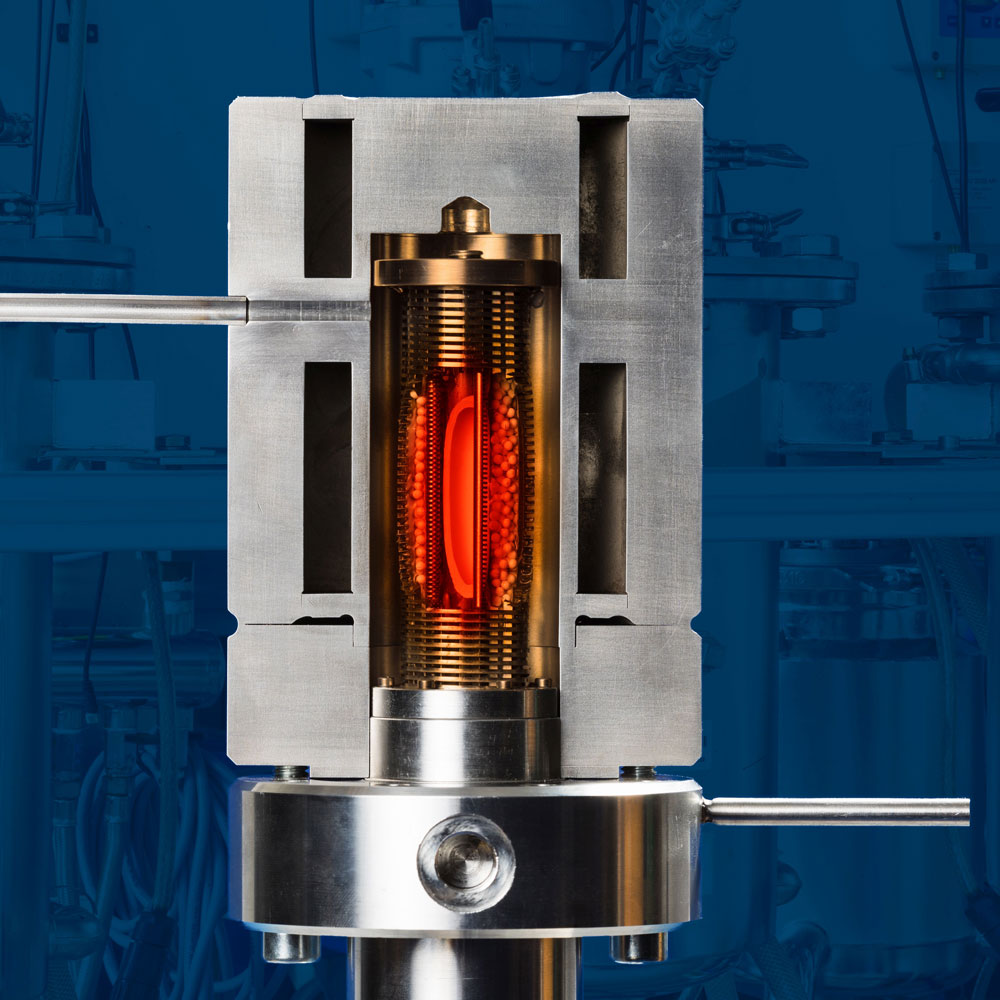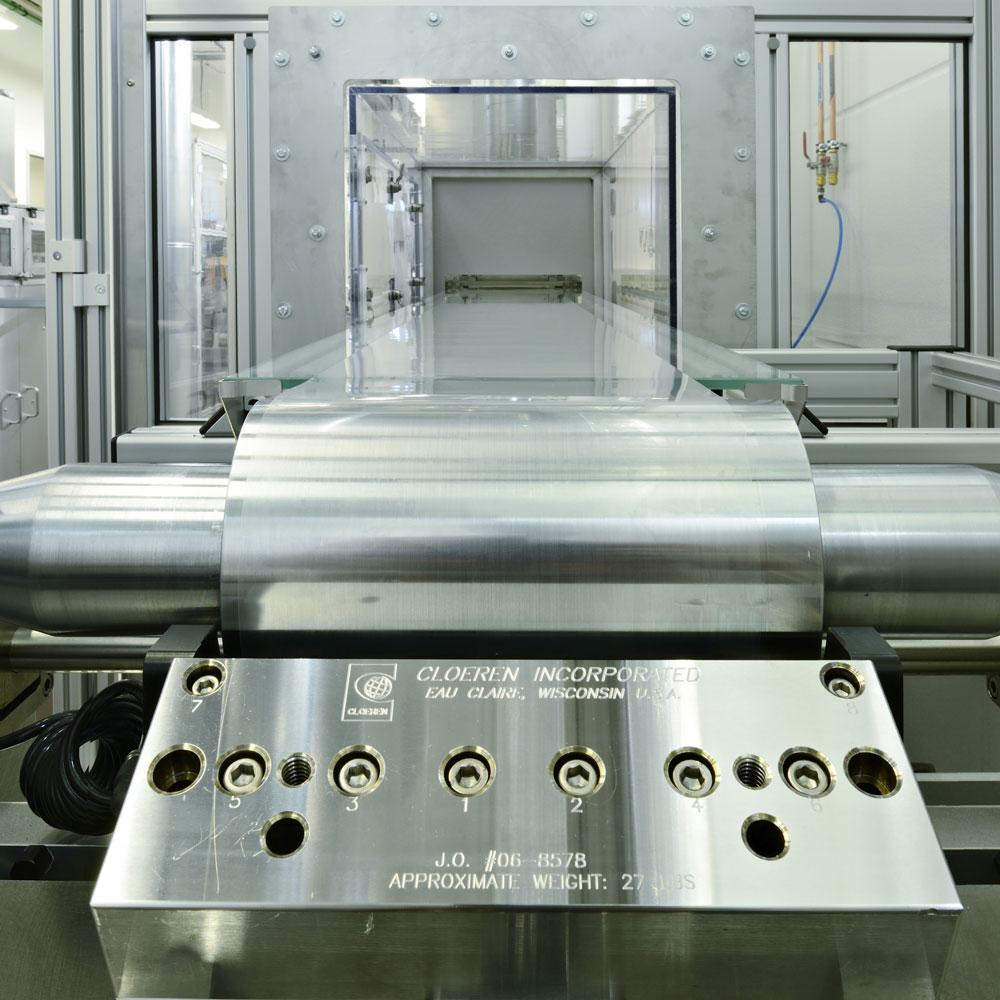
Preparatory research

Tandem solar modules for hydrogen production
Established concepts for producing solar hydrogen use a combination of photovoltaic systems and electrolyzers for water splitting. However, this is a highly complex technology, meaning investment and maintenance costs are considerable. In contrast, direct photocatalytic water splitting without electrolyzers has some clear economic advantages in operation. Furthermore, its low system complexity makes it more reliable and means it hardly requires any maintenance. At the core of this new development is a tandem solar module, where the photoanode and the photocathode are installed on opposite sides of a transparent carrier plate. When the system is irradiated with sunlight, the cathode side will release hydrogen and the anode side will release oxygen. To increase efficiency, Fraunhofer IKTS is developing novel highly pure semiconductor materials and gentle coating technologies. This will help to significantly alleviate the current problem of the defect density of materials, and thus increase the hydrogen yield. The tandem module can be scaled as needed and is therefore an attractive option for the decentralized production of green hydrogen.
Metal-organic frameworks (MOF) for hydrogen storage
Next to compressed gas and liquefied gas storage systems, hydrogen can also be stored in porous metal-organic frameworks (MOF). These frameworks provide up to 90 % porosity and bind the hydrogen in the storage tank. Larger amounts of hydrogen can thus be stored without increasing the pressure inside the hydrogen tank. The important thing here is to fill the tank with the largest possible amount of MOFs without damaging them. Due to this, the production of MOFs is mostly about finding a compromise between sufficient mechanical stability of the body and maintaining the original MOF properties as best as possible in the molded body. Fraunhofer IKTS develops various shaping techniques to achieve this. MOFs can be used e.g. as pellets and granules in bulk or as monolithic structures, such as large-format discs or honeycombs.
Membrane reactors for hydrogen production for ship propulsion
Ships transport around 90 % of global goods. At the same time, they are among of the worst CO2 offenders as climate-friendly propulsion for ships is still not available. In this context, Fraunhofer IKTS is conducting research in membrane reactors which enable the on-board production of hydrogen from renewables-based methane, which can then be fired in the ship’s engine with almost no CO2 emissions. Two processes take place inside the membrane reactor: Methanol and water are converted to CO2 and hydrogen before being separated via membrane permeation. The separated CO2 can later be re-used for on-shore methanol production, leading to a closed CO2 cycle for ship propulsion. The carbon membranes with ceramic support used in the membrane reactor are able to withstand high reaction and hydrogen pressures and enable a high reactor throughput. Moreover, the membranes are resistant to reaction byproducts.
Micro turbine fuel cell system for reconverting hydrogen
The reconversion of hydrogen and methane into electricity is an important component of any future hydrogen economy. Fraunhofer IKTS is working on a solid oxide fuel cell that will enable effective supply for residental buildings. The fuel cell is able to use hydrogen as well as methane. To increase fuel cell efficiency, it is connected with a micro turbine to create a smart closed loop system. One advantage of this is that the turbine compresses and pre-heats the required air before the latter is used for energy production in the fuel cell. Furthermore, the exhaust gas produced in the fuel cell can be used for additional electricity production in the turbine.
Hydrogen supply for autonomous process sensors
Autonomous IIoT and IoT applications (industrial internet of things and internet of things) can benefit greatly from fuel cells running on hydrogen. Based on LTCC technology, Fraunhofer IKTS is developing versatile micro fuel cell systems with an output range of 150 mW to 5 W. The systems can be implemented both with integrated hydrolysis-based hydrogen supply and with integrated hydrogen tanks. In this context, LTCC technology offers the option of designing the fuel cell stacks and the valves as planar, thus creating a compact overall system. The ceramic valves perform two functions here. For one, they control hydrogen supply to the tank. Second, they dose the hydrogen to the fuel cell stack – according to the energy demand. Thanks to their high sensitivity, hydrogen supply can be accurately regulated.
Development of highly productive roll-to-roll manufacturing processes for fuel cell components
Electrification of the power train combined with hydrogen as a CO2-free energy carrier is an integral part of the strategy pursued by international car manufacturers and energy suppliers. However, the manufacturing costs for fuel cells running on hydrogen are currently still very high. Fraunhofer IKTS is developing highly productive roll-to-roll techniques for the mass market, which allow to efficiently manufacture the required main components. This includes, for instance, membrane-electrode assemblies (MEA).


